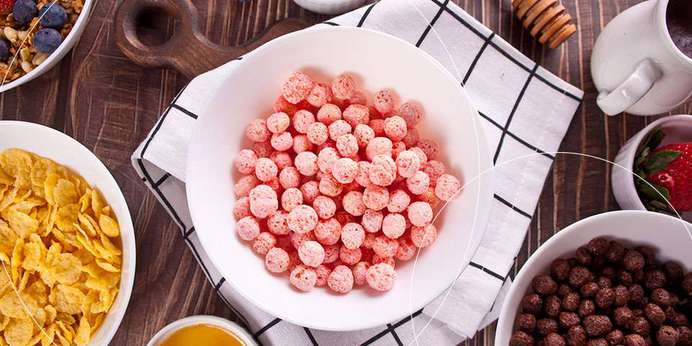Consider the Color of the Base Food
The first thing to take note of is your cereal's base. Do you use corn, wheat, oats, or a combination of them?
Any grain has its own color, which is likely to cause variance in your measurements. Anything from water content to soil it was grown in can affect the color, adding brown, yellow, white and green notes to your outcome. While consumers may expect some degree of color variation, this effect becomes even more pronounced if you introduce extra colorants to your mixture.
Think About Potential Color Bleeding
Once you've made sure your base color is stable, you also have to think about additives and coatings. Does your cereal feature that powdered-sugar coating kids love? How about dried fruits or marshmallows? Each of these ingredients introduces its own colors. They may be prone to color bleeding, especially if they're kept in storage for a long time.
Understand Color Changes in Shelf-Stable Materials
As a shelf-stable food, many people buy cereal in bulk or with the intention of keeping it in storage for some time before consumption. This is why color measurement is vital both once your cereal is ready for distribution and in the long run — you'll need to examine how colors may change, blend, and even affect consistency and texture.
To gauge even the smallest changes during cereal color measurement, a spectrophotometer is the industry's gold standard. It allows you to easily quantify how consumers will experience your cereal visually and help you develop an efficient process for measuring and adjusting color throughout manufacturing.


